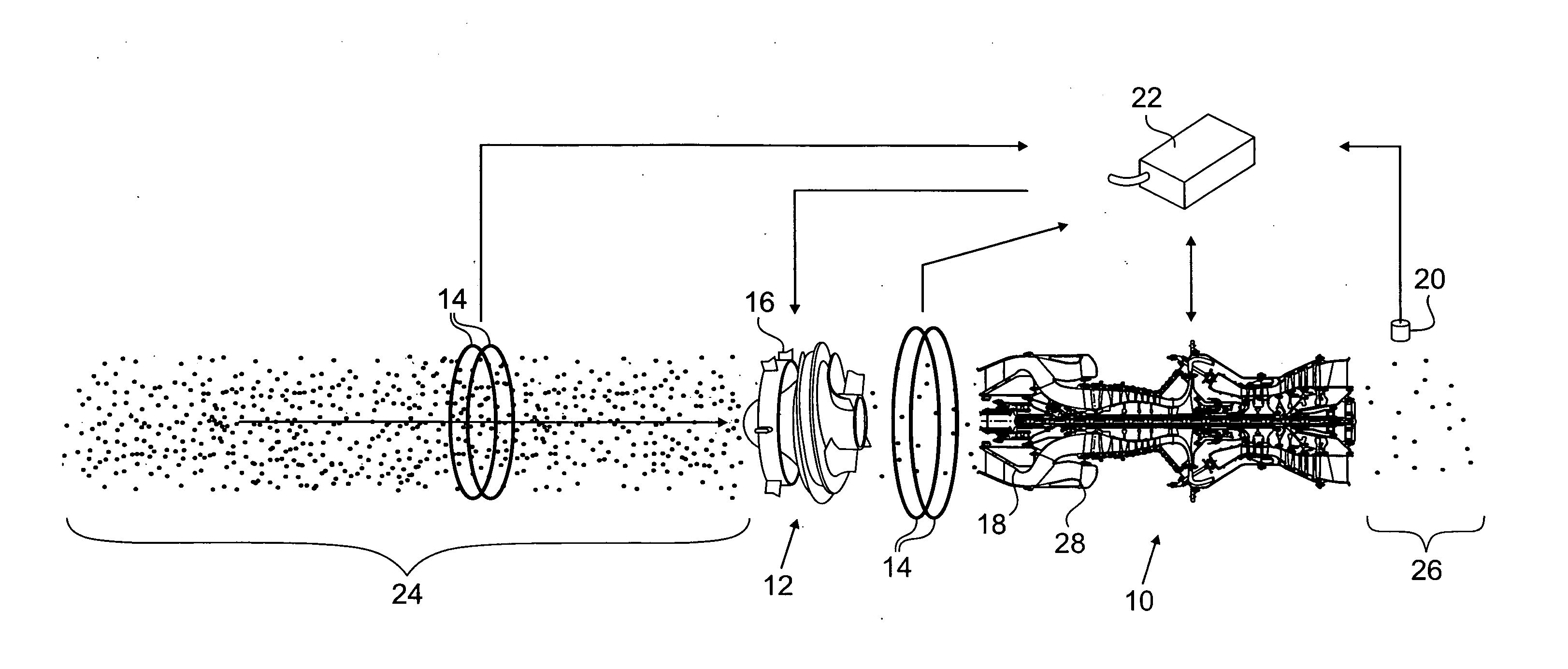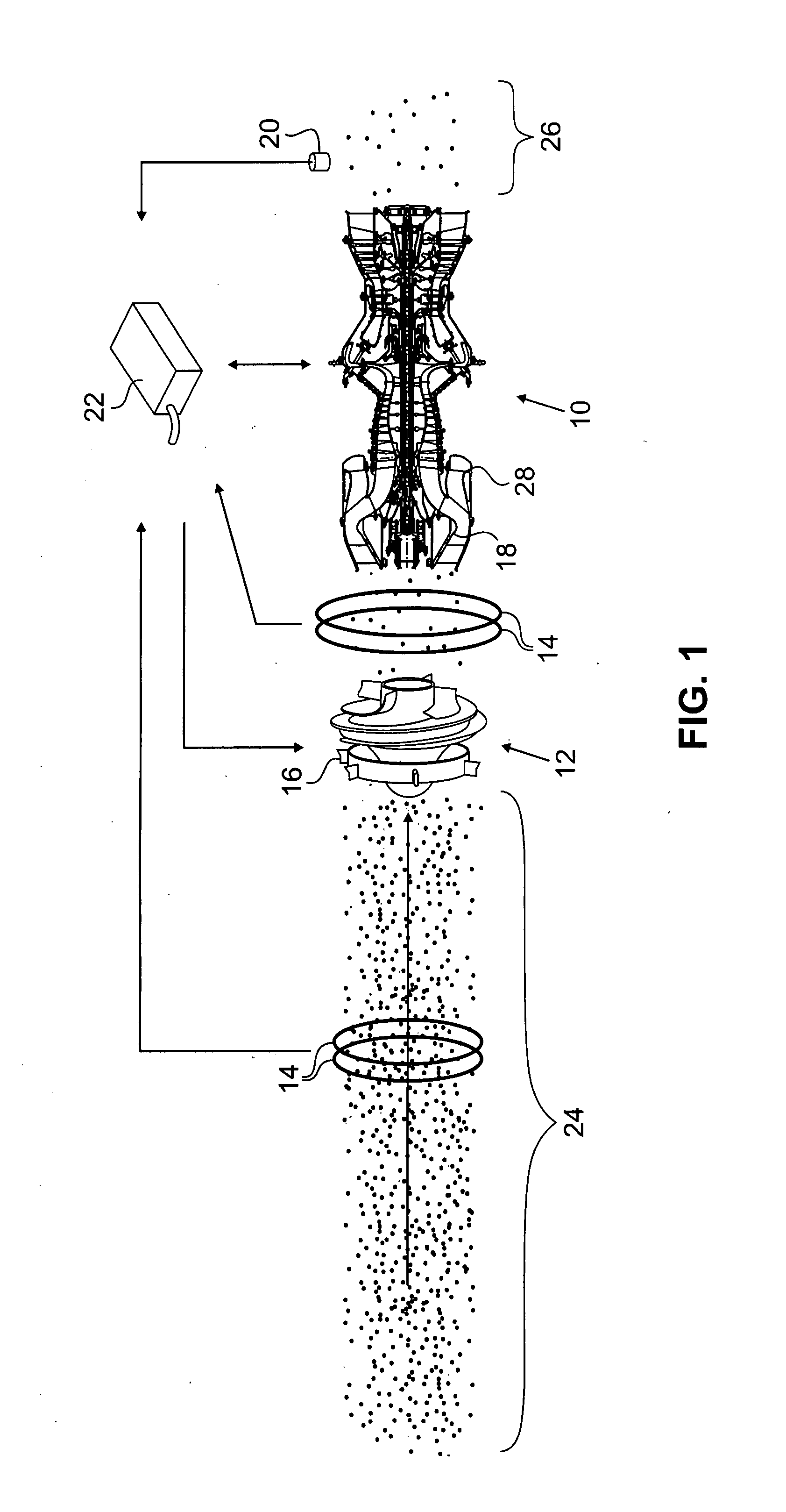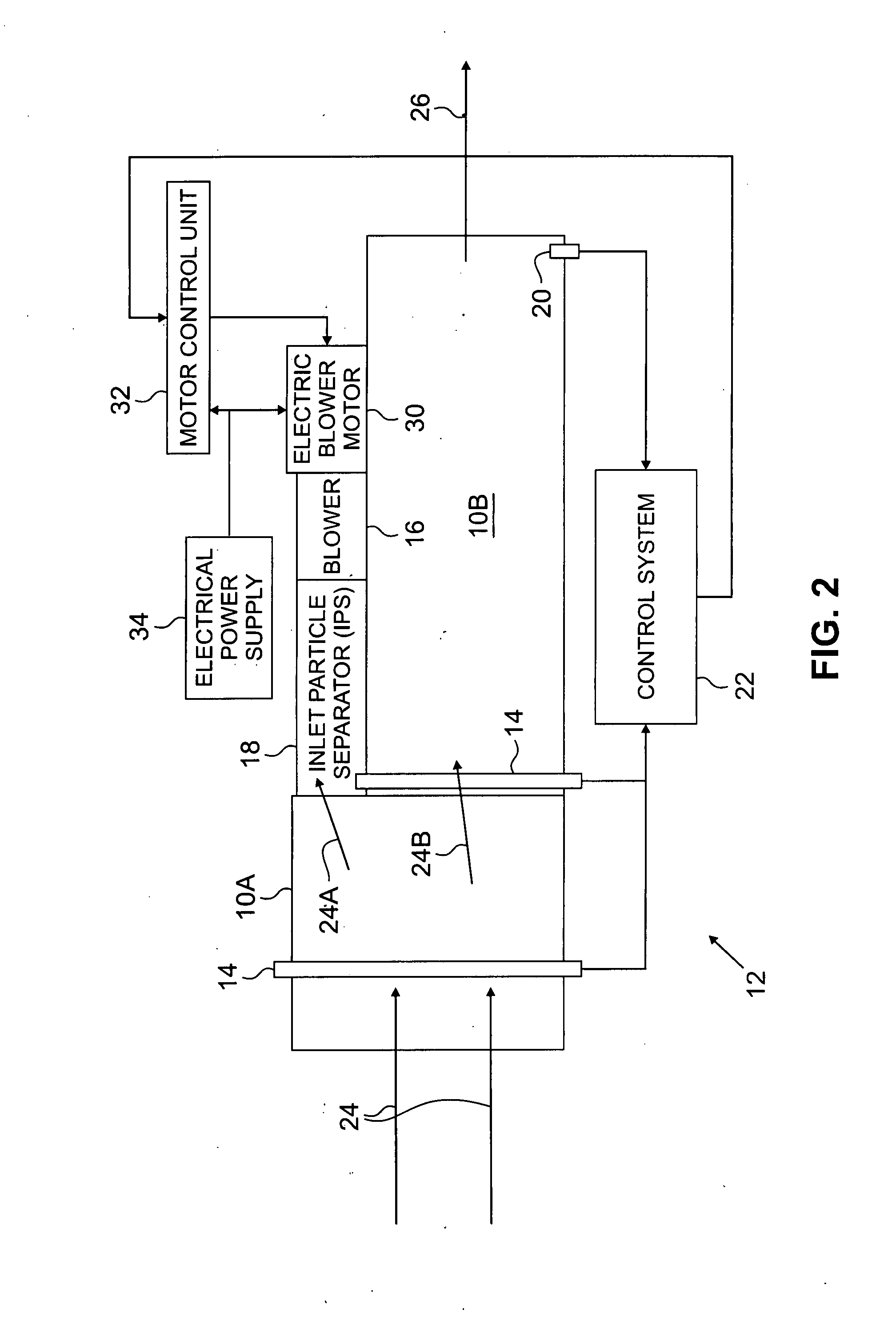Particle separator and debris control system
a technology of particle separator and control system, which is applied in the direction of separation process, machine/engine, liquid fuel engine, etc., can solve the problems of large amount of dust and debris, and large amount of debris on the landing and taking off from unpaved areas
- Summary
- Abstract
- Description
- Claims
- Application Information
AI Technical Summary
Problems solved by technology
Method used
Image
Examples
Embodiment Construction
[0008]In general, the present invention provides a debris control system having a blower that can be powered at selected speed and power settings as a function of the distribution of debris present in ambient air entering a gas turbine engine. The blower can thus be turned “on” or “off” on demand, and, when turned on, operated at speed and power settings that are dynamically matched to desired particle separation performance characteristics in real time. This provides efficient operation of the debris control system with reduced power consumption. As used herein, the term “debris” refers generally to any kind of airborne particulate or foreign object matter present in ambient air that can enter a gas turbine engine.
[0009]FIG. 1 is an exploded schematic view of a gas turbine engine 10 having a debris control system 12 that includes an inlet debris monitoring system (IDMS) 14, a blower 16, a particle separator “ramp”18, an exhaust debris monitoring system (EDMS) 20, and a control syst...
PUM
| Property | Measurement | Unit |
|---|---|---|
| Speed | aaaaa | aaaaa |
| Shape | aaaaa | aaaaa |
Abstract
Description
Claims
Application Information
 Login to View More
Login to View More - R&D
- Intellectual Property
- Life Sciences
- Materials
- Tech Scout
- Unparalleled Data Quality
- Higher Quality Content
- 60% Fewer Hallucinations
Browse by: Latest US Patents, China's latest patents, Technical Efficacy Thesaurus, Application Domain, Technology Topic, Popular Technical Reports.
© 2025 PatSnap. All rights reserved.Legal|Privacy policy|Modern Slavery Act Transparency Statement|Sitemap|About US| Contact US: help@patsnap.com



